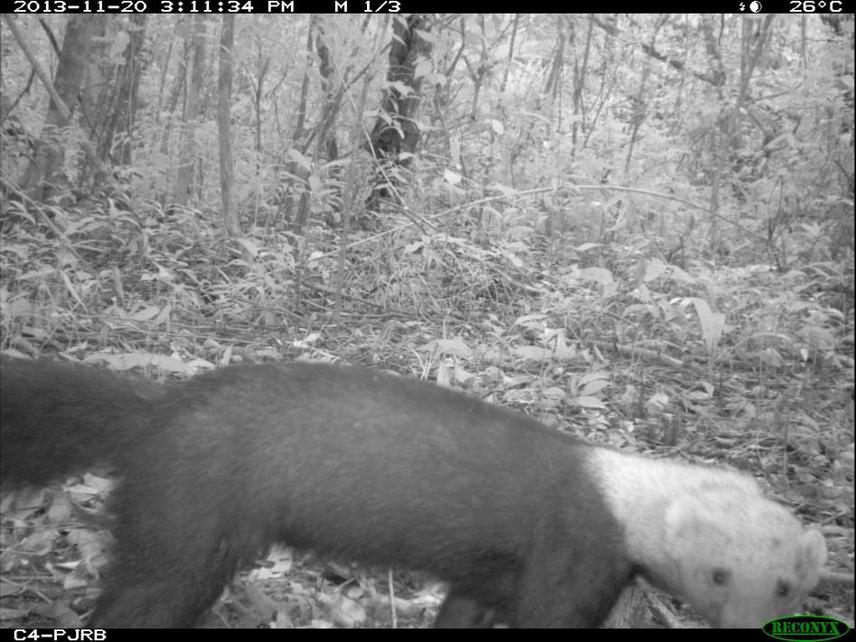Pablo Ramírez Barajas
This project aims to assess the relative abundance of medium and large vertebrates, in a tropical forest affected by a high intensity hurricane five years ago.
The study region hosts the two largest biosphere reserves of south-eastern Mexico (Sian Ka'an and Calakmul), which are connected by the Sian Ka'an-Calakmul Corridor (SKC), thereby forming one of the largest forest tracts of the Mesoamerican Biological Corridor (MBC). SKC is characterized by the presence of a host of Yucatec Maya communities, where forests are under forest management systems. Because of its location, this region is subject to recurrent hurricanes. For the vast majority of vertebrate species in this region, there is lack information on their relative abundance and conservation status, and even less on their responses to hurricane disturbances.

Tayra (Eyra barbara)
The results will provide information on the relative abundance of large vertebrates in the Maya Zone, and allow identifying the variables that influence the variations in abundance. Estimates of the relative abundance of species will be obtained for species groups according to their habitat specialization and food guild: herbivores (Central American Agouti, Spotted Paca, Yucatan Brown Brocket Deer, Central American Red Brocket Deer and White-tailed Deer); omnivores (Great Curassow, Ocellated Turkey, White-nosed Coati, Collared Peccary, White-lipped Peccary and Nine-banded Armadillo); and carnivores (such as the Margay, ocelot, puma and jaguar). The results will detail the relative abundances of the aforementioned species under different management strategies and intensities of disturbance in SKC, allowing inferences to be made about these management strategies (e.g. protected areas vs. areas under forest community management) and intensities of disturbance (high damage areas vs. low damage areas, five years after Hurricane Dean). The response patterns of the species under study will be evaluated by comparing their relative abundances before the hurricane, in the short-term post-hurricane period (Ramírez-Barajas 2011, Ramírez-Barajas et al., 2012a, Hernández-Díaz et al. 2012, Ramírez-Barajas et al. 2012b) and 5-years after the hurricane.
The use of functional groups (diet and habitat specificity) will allow analysing ecological attributes of species that may explain species abundance, while other functional traits is known to influence species abundance (eg body size, home range). Understanding abundance changes in relation to different scenarios, disturbance and management kind, is of high importance for ecological knowledge, in particular because it is key to identify hot spots of local extinction. It is noteworthy that the methods proposed for this study are meant to be replicable and the results will be useful for conservation stakeholders, from government agencies and communities willing to implement communal forest reserves.